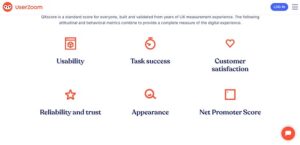In today’s highly competitive business environment, tracking the performance of companies that provide a similar service or product is essential if you want to lead your sector.
Just as competitive sport consistently pushes athletes to outperform each other, helping sports to grow and evolve, friendly competition over customers and revenue is what drives innovation in business.
This article will explain why you need to analyze your competition, what a competitor analysis for digital marketing is, and how to perform a competitor analysis successfully.
What Is Competitor Analysis?
Competitor analysis in marketing and business management refers to the process of assessing the strengths and weaknesses of current and potential competitors. Good competitor analysis provides the strategic context needed to identify areas of opportunity and threats posed by other businesses.
In this article, we’ll cover the basics of performing competitor analysis successfully, with a special emphasis on digital marketing, SEO competitor analysis, and how to beat your rivals by emulating their best content.
SEO, or search engine optimization, has become a key ingredient in any contemporary digital marketing strategy.
An SEO competitor analysis analyzes your competition according to their SEO performance, i.e., how high up they appear on search engine results pages (SERPs) relevant to your field. It can help you develop and refine your SEO strategy and identify areas where you might lose out to competitors.
Competitor Analysis in Six Simple Steps
So, without further ado, here’s how to do it.
1. Identify the Competition
The first step in any competitor analysis is to identify who exactly your rivals are. To do this, start by defining your industry and the scope of what you count as competition.
While most companies will have a good idea of their closest business rivals, a good way to start compiling a list is with an internet search for terms you think should return your business as a result.
Searching the web for terms like this not only helps you build a database of potential competitors but is also a first step in ranking them for SEO competitor analysis.
Consider the example shown here. A Google search for “organic beeswax candle” returns Bee You Organics and Savannah Bee as the top results. If you were doing an SEO competitor analysis of the market for organic beeswax candles, they would be the rivals whose success you would want to replicate. This search also reveals some related search terms you could target, such as “are beeswax candles organic?” and “do beeswax candles really clean the air?”
Keep in mind that search engines also take location into account, a consideration you should apply to your preliminary competitor analysis by ensuring that you search with the same location settings as your target audience.

It’s worthwhile to continually reevaluate the competitive landscape within your chosen parameters to stay abreast of new developments from known competitors and keep informed of new and upcoming threats.
2. Establish How You Will Measure Success
Once you’ve compiled a list of potential rivals, a middle step before ranking them according to threat level is establishing how you will measure their performance.
For an SEO competitor analysis, one of the most important indicators of success will be SERP performance for overlapping keywords and phrases. Overlapping here refers to searches where you and your competitors are trying to rank.

For example, a business that provides software as a service (SaaS) will likely compete for the highest number of those all-important SaaS backlinks. While you may be unable to gather data on the number of backlinks a competitor’s site has, you can note any high-authority domains that link to it. Once you know these, you can target those same domains for backlinks to your website.
Of course, not all searches are broad web searches. Social media visibility is just as important for many businesses as your position in Google’s SERPs. In the case of social media, appearing at the top of search results is desirable, but so is achieving priority in people’s feeds.
Ultimately, both Google and social media platforms rely on ranking algorithms to sort results and prioritize certain content more than the rest. Understanding how these algorithms work is the key to appearing above your competitors, whether that means being higher up in Google’s search results or on people’s Instagram feeds.
It’s worth noting that mentions from other content creators can be as valuable to your business as your webpage appearing high up in search results. For example, the top search results for “bakery in London” are all top 10 style listicles from popular media outlets.

When deciding how to compare the performance of rivals, don’t overlook reviews and press coverage as measures of success.
3. Rank Competitors
Having established the criteria for success, the next step in your analysis is to rank your competitors according to these.
By understanding the market leaders within your field, you’ll know whose example you should be following, allowing you to better hone your analysis. Organizing your list of competitors according to their relative performance means you’ll be able to ask yourself, “Why is competitor X seeing huge growth while competitor Y’s sales are declining?”
Remember, if you’re measuring success by market dominance, you’ll need to consider other markets in which a given competitor might operate. It’s therefore not enough to simply rank according to company size or revenue, and you should further investigate their departmental performance and individual product sales.

For SEO competitor analysis, a good tactic is to create a table that shows the top search engine results for the keywords and phrases directly related to what your business provides. By displaying the results in a table, you can visualize which companies rank highly for multiple searches. These companies will be your primary competition.
If your success metrics are less straightforward, you may need to be more creative with how you rank competitors. For example, in the previously mentioned London bakeries search, you could give each business a score according to its placement in different lists.
Lily Vanilli would then emerge as a high-performing London bakery because it appears in both the Time Out and Vogue lists, even though its website doesn’t directly appear on the first SERP for the term “bakery in London”.

4. Perform Comparative User Testing
Starting with your strongest competition and working down the list, comparative user testing entails taking a customer-centric view of the market, putting yourself in the shoes of potential purchasers, and asking why they might choose one company’s offerings over another’s.
In digital marketing, this often takes the form of website usability testing. Usability testing assesses whether real users can intuitively navigate a website, find the desired content, and effectively use its features.
You must remain neutral during this phase of analysis. For this reason, many businesses outsource the process to professional usability testers or enlist the help of a focus group.
Combining step two with step four, ask yourself how you plan to measure the usability of your website.
If you opt for a focus group, a simple measure is to ask participants to rank or score your competitors’ websites according to things such as overall user experience, ease of navigation, or their likelihood to return. To avoid biased feedback, try not to disclose which site belongs to your company.
User experience experts UserZoom have even managed to quantify users’ attitudes and behaviors into a single score, which they call a QXscore.

Tools like UserZoom QXscore enable you to track your website’s user experience over time and help to compare its performance to those of your competitors.
5. Pinpoint Your Competitors’ Strengths
The point of carrying out a competitive usability investigation is to identify what potential customers see as the relative strengths and weaknesses of the companies vying for their business.

In a competitive marketplace, first impressions count for a lot. Knowing how actual users perceive a brand when they encounter it online can tell you much about why consumers end up choosing one company over another.
When it comes to your online presence, a user’s first impression of your business will usually come from its website landing page. If comparative user testing highlights a rival’s landing page as especially inviting, try to identify why and whether there are any changes you can make to your site to increase its initial appeal.
Compare the landing pages for Nike and Adidas shown here. Both websites use a large display image showing people wearing the respective brand’s products. Both pages prominently show a search bar, intuitive “my basket” and “my favorites” icons, and a menu with options to shop for men’s, women’s, or kid’s ranges. Finally, both pages advertise free shipping and feature a “join now” call to action.
As direct competitors, Nike and Adidas likely monitor each other’s websites. The fact that they share several features suggests that these things work and that each brand’s web designers know that what works for Nike will likely work for Adidas and vice versa.


By pinpointing your competitors’ strengths, you gain valuable insight into why customers might choose a rival over your company. By focusing on these strengths rather than their weaknesses, you can create focused messaging that pits you against a specific competitor without having to resort to put-downs or pettiness.
6. Establish Opportunities
Once you understand the things that make a competitor attractive, this creates an opportunity to convey those same strong points in your digital branding. Going one step further, you can acknowledge your competitors’ strengths in your messaging. This will allow you to play a game of corporate one-upmanship by emphasizing your company’s superior offering.

The insights gained from a competitor analysis can be applied across your marketing content, from email campaigns to social media posts to virtual events that you use to grow your mailing list.
A good competitor analysis can not only give you an offensive strategic advantage, revealing ways for you to outshine your rivals in their strongest areas but highlight defensive opportunities, showing you if competitors are specifically going after your customers with their marketing.
If you know a competitor is targeting your customer base, whether it’s a known rival or a new
entrant to the sector, you’ll be better prepared to counter their narrative and, if necessary, adjust your sales and marketing materials in response.
Think of the web browser marketing war between Google and Microsoft, each company trying to position Chrome or Edge as the more secure internet browsing option. In recent years, both companies have attempted to leverage their platform dominance to argue for the superiority of their offering, with Google recommending those who visit the Chrome webstore using Edge browser to switch to Chrome and Microsoft making similar suggestions through the Windows Operating System.


Related Content
- 3 Stealth Tools For Competitor Analysis
- 10 Local SEO Tips Your Lazy Competitors Are Neglecting
- How to Conduct a Marketing SWOT Analysis
Conclusion
There you have it: how to perform competitor analysis successfully!
Now you know how to do it, you should be able to discover and rank your business’s main rivals, measure their performance according to a relevant metric, perform a comparative user study, and analyze their strengths accordingly.
You should share the results of this analysis not just with your marketing department but with sales teams, web developers, and senior managers. The better your company’s employees understand the competition, the easier it will be to make changes that improve your overall competitiveness.
Remember that what works for a rival won’t necessarily work for you. Having identified opportunities based on a competitor’s success, these should be acted upon in a controlled manner. A/B test all changes to your website while keeping track of your performance in the market.
Isn’t it time you put these tips to use in your marketing?
___

Written by our guest writer Nick Brown, the founder & CEO of accelerate, a SaaS marketing agency
that exclusively partners with enterprise tech companies to scale their SEO and content marketing. Nick has launched several successful online businesses, written and published a book, and grown accelerate from a UK-based agency that now operates across US, APAC, and EMEA. He has written for sites like Hubspot and BambooHR.

